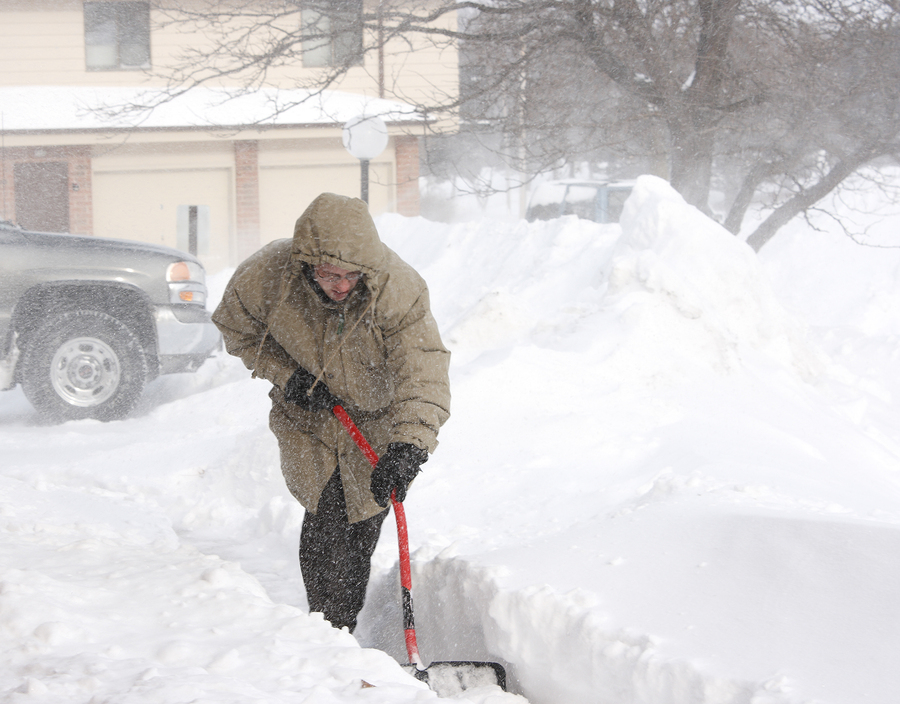If you find yourself in the Great Lakes region, along the northeast coast, or even some places in the middle of the country then you are likely hunkered down today, just trying to keep warm. Indeed, it’s dangerous cold today especially, but in general over the last week. In some places, it’s colder today than it has been in 100 years.
But do you know how to adequately dress if you need to go outside? If not, pay attention. It could help save you from frostbite…something that could “rob you of the tips of your nose, ears, chin, fingers or toes.” And it can happen much faster than you might realize.
“Frostbite is not only dependent on the outside temperature; it’s also affected by the wind chill factor. As the speed of the wind increases, our bodies cool at a faster rate, causing the skin temperature to drop. Higher altitudes can also affect the speed at which skin can freeze.
The National Weather Service has created a wind chill chart that shows the time it might take to develop frostbite at varying temperatures and wind speed. The index was tested on human face models.
For example, if it was zero degrees Fahrenheit and calm, your chance of frostbite is relatively low. Add wind at 15 miles per hour, and it would take only 30 minutes before frostbite sets in. If the wind rose over 50 mph, it would take a mere 10 minutes for frost to bite.”1
But it’s not just the cold. If you are a smoker, take beta-blockers, have poor blood circulation to the legs, or have diabetes or Raynaud syndrome, your risk is higher. And the CDC reminds everyone that if you drink to excess, you might feel like your body temp is higher than it actually is. So be careful.
The stages of Frostbite:
Stage one is “often called “frostnip” and begins with redness and a pins-and-needles feeling.”2Once you start to feel this, get out of the cold as quickly as possible to avoid any further damage to your skin. You’ll need to warm up quickly but safely; try sticking your fingers into your armpit, or rewarm your toes with a soak in warm – NOT HOT- water for up to 30 minutes. And make sure to test the water with a part of you that has feeling…and don’t use the stove or warming pads because you could burn yourself. Rewarm your ears, nose, and cheeks with a warm cloth. Repeat as needed.
The second take is superficial frostbite. This happens when “your skin begins to turn pale white or grayish-yellow instead of red. It might even begin to appear blue. Crystals of ice are beginning to form in the skin, and it may become hard and numb to sensation. Some people say it feels ‘waxy.'”3 At this point the pain and redness will subside so often times, people don’t even realize what’s happening. However, once the skin warms and begin to swell, tissue damage is occurring and you’ll need prompt medical treatment to prevent further and more serious damage.
“Immediate rewarming is key, but it should be done carefully by trained medical professionals, who will immediately wrap the injured area to protect it. At times, blisters filled with fluid can develop, and the skin can sting, burn and swell dramatically.”4
The third and last stage is deep frostbite. Here the skin can appear “blue and mottled, and numb to pain and cold,”5 blood-filled blisters could form and your muscles next to the area might not work properly. If this happens you are in serious danger “of blood clots and will need anti-clotting medications to increase blood flow to the area.”6 At this point, medical attention is crucial to avoid amputation of the injured tissue. “Depending on the severity of the injury, the tissue can look black and feel hard after it’s rewarmed. If the tissue has died, a process called gangrene, then the dead areas may have to be excised or amputated. At times, there can be long-lasting damage to muscles, tendons, nerves and bones in the area as well.”7 If you are unable to make it to a doctor or hospital, “wrap the affected areas in sterile dressings, carefully separating injured fingers and toes from each other. But try to move the affected areas as little as possible to avoid further tissue damage.”8
As I said, these temperatures must be taken seriously and respected. It’s seriously and dangerously cold outside.
A caution, if you do have frostbite in an area and are warmed up but then are back in the cold, the damage will be even more severe. So just warm up once. And once inside, of course, please use warm drinks to replace lost fluids. The CDC also says do not massage frostbitten areas as you’ll only make any tissue damage worse. And the same goes for walking on frostbitten feet or toes- just don’t do it.
Stay safe and please, for the next couple of days if at all possible, just stay indoors.
XO- Erin
SOURCE:












